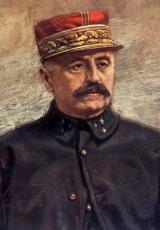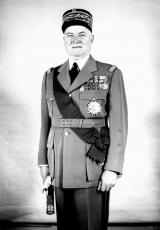North-African soldiers. 1914-1918
Sous-titre
Monuments and graveyards
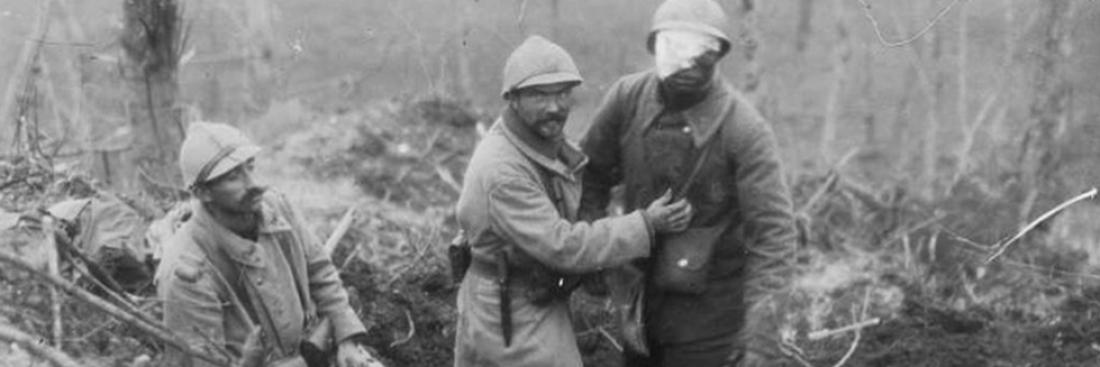
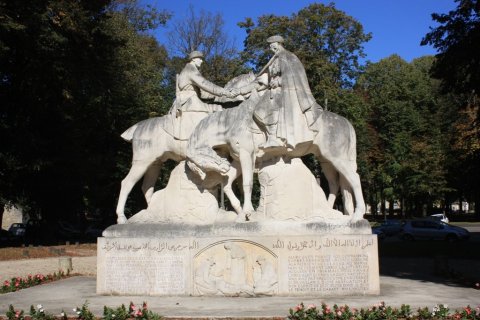
Senlis (Oise): Monument to the French-Moroccan fraternity. Inaugurated in Casablanca (Morocco) on 20 July 1924 by Marshal Lyautey, transported to Senlis and re-inaugurated on 11 November 1965. Source: Photo: Régis Biaux.
The indigenous troops, whose pennants and uniforms bore an embroidered crescent, an emblem worn on the 1915 model helmet, were trained infantrymen, spahis and méharistes (camel cavalry). On the eve of war, there were seven Algerian infantry regiments (1st, 2nd, 3rd, 5th, 6th, 7th and 9th RTA), two Tunisian infantry regiments (4th and 8th Tunisian RTT), five spahi regiments (four Algerian and one Tunisian), several méhariste companies, and, in Morocco, auxiliary units (goums grouped into tabors).
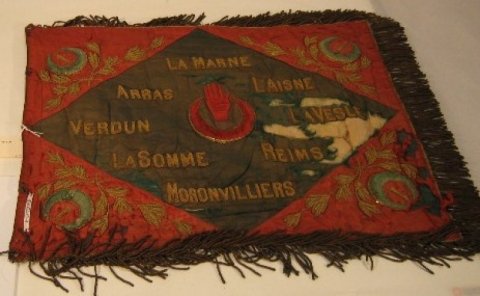
Flag of the 1st Marching Algerian Infantry Regiment. 1914-1918. Source: Musée de l'infanterie.
All of these units together with the others (Zouaves, African Hunters, bataillonnaires (African light infantry soldiers) and legionnaires) formed the 19th Army Corps (CA), still named the Army of Africa, whose HQ was based in Algiers.
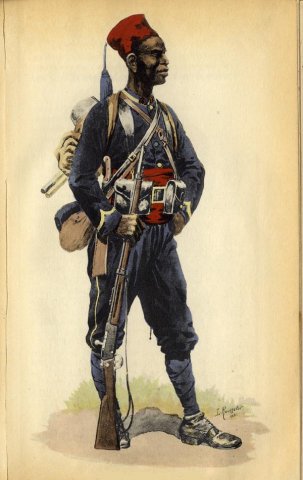
Senegalese infantrymen. Source: Radio France International
All senior officers were from mainland France, but there were numerous indigenous officers and non-commissioned officers among the lower ranks, including Captain Khaled Ould el Hadj Abd el Kader, grandson of the emir brought down by Duke d'Aumale, who served in the 1st Spahis.
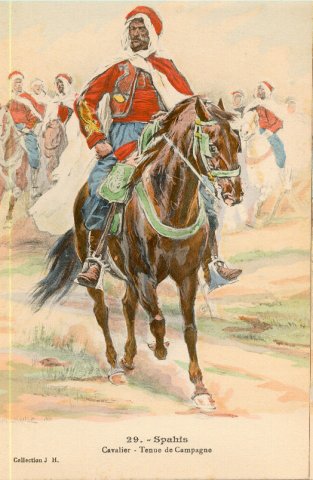
The spahi uniform. Source: military-photos.com
The Algerian troops were clearly held in high esteem since, in 1913-14, a single infantryman or spahi earned on average four and a half times more than a private from the mainland (22 centimes a day compared to five), provided they were in one of the three oldest regiments.
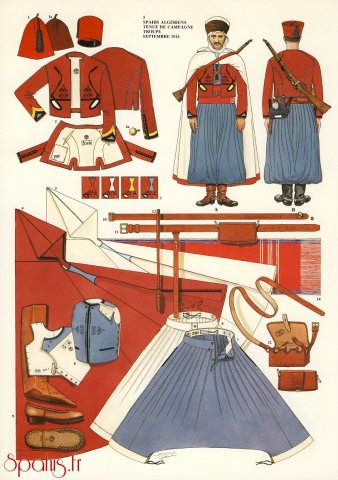
Algerian spahis. Field dress. spahis.fr
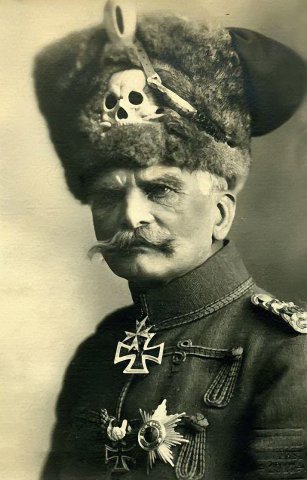
Mackensen in Belgrade between 1914 and 1915. Source: Public domain.
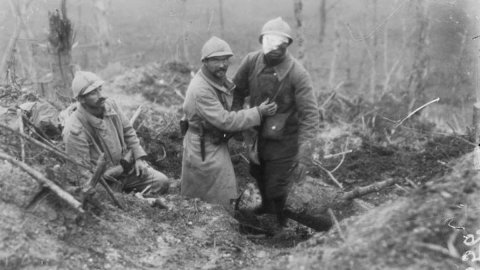
”The Balcony”, Chemin des Dames, Aisne, an injured infantryman. 23 October 1917. Photograph: Jacques Ridel. Source: ECPAD
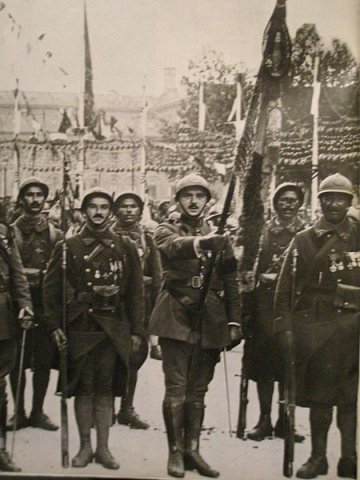
Paris, July 1919, during the victory celebrations: the flag of the 2nd RMTA, one of the most decorated regiments in the French army. The infantrymen in its guard of honour bear their individual medals. Source: R Merly. (Album of the war of 1914-1919. © L'illustration).
Between 1914 and 1918, 173,019 Algerians, 80,339 Tunisians and 40,398 Moroccans served for France. By 11 November 1918, their losses totalled 28,200 dead and 7,700 missing.
Sites of remembrance

Moroccan graves in Missy-sur-Aisne. 1915. Old post card, wording in German: Marokkanergräber bei Missy.
For Muslims, the temporary graves at the front, while basic, were decorated with wooden steles to distinguish them from Christian graves identified with Latin crosses. This differentiation of funeral emblems was instructed by a ministerial memo of 3 December 1914 specifying the rules to follow regarding the burial of Muslim soldiers: the shahada had to be pronounced, the body washed and rolled in a white cotton shroud, no coffin, with a stele pointing towards Mecca.
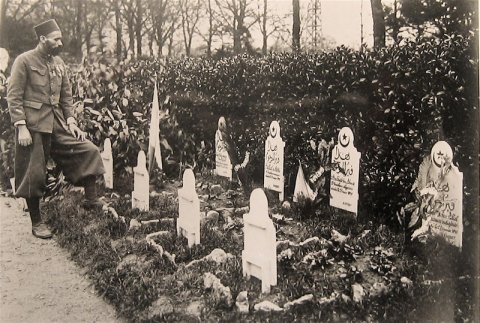
Muslim cemetery in Bagneux, graves of Algerian and Moroccan infantry and indigenous workers killed in January and March 1915. Source: Overseas Archives Centre, Aix-en-Provence.

Muslim area in the national graveyard in Amiens (Saint-Acheul). In the foreground, the grave of a soldier in the 45th RTS who fell in the Battle of Somme. Source: Photo: Claude Villetaneuse
The North African soldiers are buried in a number of military cemeteries in France and in other countries, in perpetual graves maintained at the expense of France's Ministry of Defence.
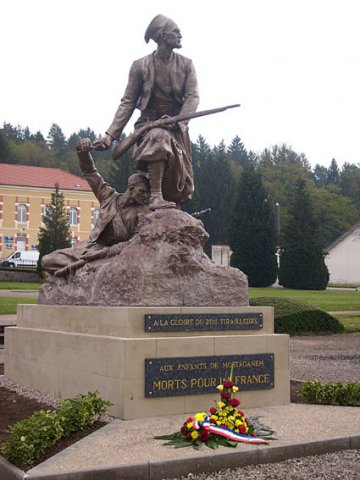
Monument to the men who died in Mostaganem, rebuilt on the military exercise place of the 1st Infantry Regiment in Epinal, in 2010. It features two Algerian infantrymen, the work of Maurice Favre. Source: Photo, Mostaganem veterans association.
The monuments to the dead and regimentary steles were erected in the post-war period to honour the dead or commemorate battles, such as the monument in Vimy (Pas-de-Calais), a tribute to remember the attack of 9 May 1915 led by the Moroccan Division under General Blondlat.
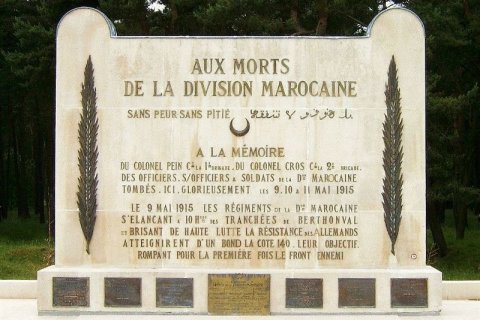
Vimy (Pas-de-Calais): Monument commemorating the battles led by the Moroccan Division from 9 to 11 May 1915. Source: Public domain.
A plaque in homage to the Muslim soldiers who died for France was inaugurated on 11 November 2010 at the Grande Mosquée in Paris.
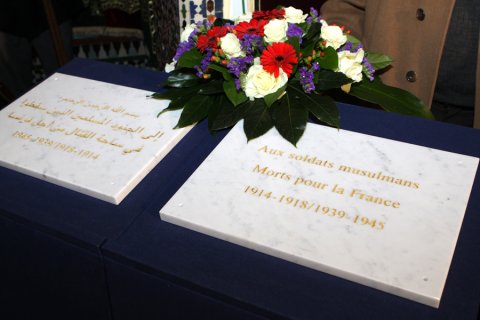
Commemorative plaque to the Muslim soldiers who died for France at the Grande Mosquée in Paris. Credit: Cch Chatard/DICoD
This memorial joins the commemorative monument dedicated to the Muslim fighters inaugurated in June 2006 in Douaumont (Meuse).


Memorial to Muslim Soldiers in Douaumont. Source: petit-patrimoine.com


